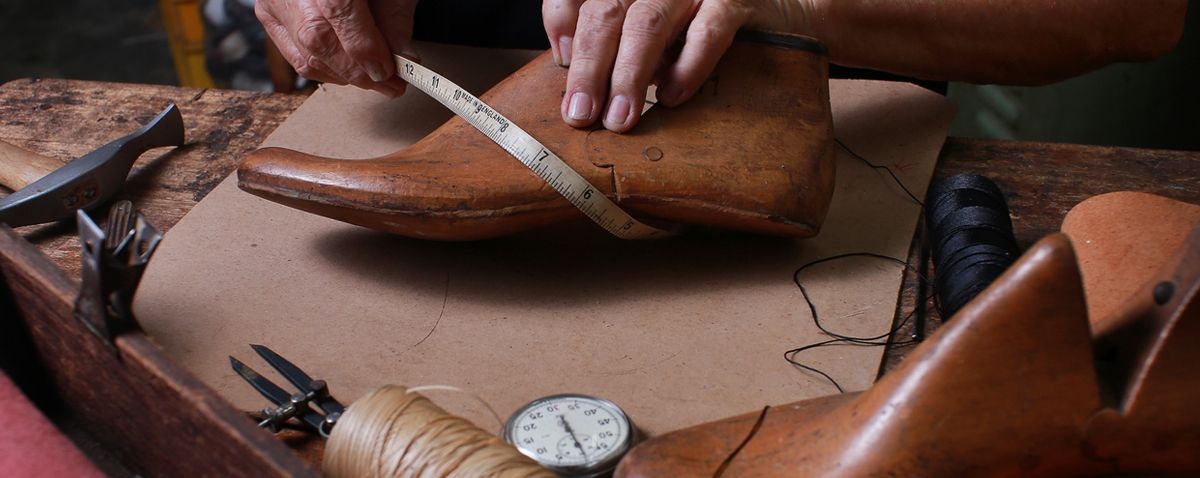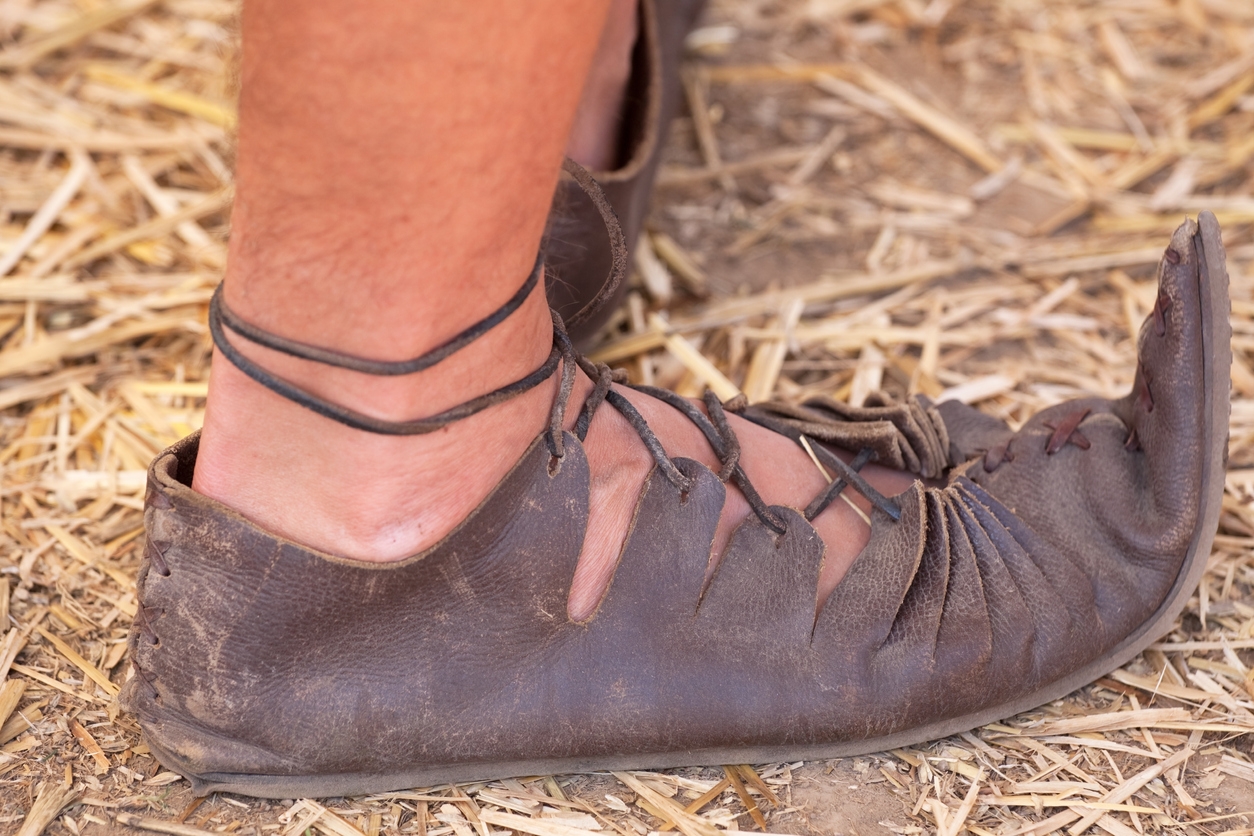The story of the human fascination with footwear goes all the way back to early civilization. Once they were merely practical, silently bearing our weight, protecting us from the rough edges of the world, and taking us forward. But through the ages, they’ve become a language style, a status symbol, and a reflection of our cultural identity.
In their evolution shoes became much more than simple implements for our feet. Humanity has fostered an enduring passion for footwear. The royal shoes of old were articles of luxury, often adorned with gemstones. These early trendsetters have left an indelible mark on our culture.
We can find traces of the luxury associated with royal footwear in today’s designer shoes. Today, celebrities and influencers have replaced kings and queens in setting those trends. And functional, economical shoes in busy city streets take the place of unremarkable, purely utilitarian footwear of ancient commoners.
In this post, we’ll explore the fascination and passion humans have for shoes. We’ll travel back in time to observe how shoes rose from basic utility to self-expression. Along the way, we’ll discover the different ways shoe sizes are measured. We’ll also pull back the curtain on how shoes are made.
Shoe-making is an art form that balances utility, design, and comfort. Before wrapping up, we’ll turn our attention to the dynamic scene of fashion and pop culture. Shoes often take centerstage there. Lastly, we’ll speculate on what the shoes of tomorrow might look like. Let’s start our walk.
The History of Shoes
Footwear has been a tool of necessity for millennia. Ancient Egyptians, Greeks, and Romans crafted sandals and boots from whatever material they had handy. It wasn’t uncommon to see people wearing shoes made from woven plant fibers. Leather was another material of choice. But even in those days, shoes served more than just practical purposes [1]. From the golden sandals of Egyptian pharaohs to the Caligae of Roman footsoldiers, shoes suggested rank, status, and wealth.
Shoes of the Middle Ages and the Renaissance
The Middle Ages and the Renaissance saw a rise in new fashion and style, further elevating shoes from their utilitarian roots. Women would wear tall platform shoes, Chopines. They partly served to protect women’s dresses from mud and dirt, but mostly as a display of the wearer’s status. The taller the Chopines, the higher the status of the woman wearing them. Despite the law limiting their height, Chopins would sometimes be as tall as 20 inches [2]. The “poulaine” was a popular shoe in Medieval Europe. It was extravagantly long and pointy.
Shoemaking in the Industrial Ages
Among many other things, the Industrial Revolution also made shoes democratic. New machines cut down the manual labor and time for shoe-making. The shoes became more affordable and available in a much wider variety. And for the first time in history, they were accessible to everyone.
Modern Day Shoes
Today, designer brands have elevated shoes to luxury status once again. Modern shoe companies aren’t in the shoe business; they’re selling a lifestyle, a status symbol. Shoe trends are fast and constant. Sneakers garner some much hype that people wait in lines overnight for new releases. Exclusive, limited-edition shoes are in high demand and they sell out quickly.
Shoe Size Systems
The art of measuring feet is just as old as shoes. Over the centuries, many shoe size systems developed — each reflecting the idiosyncrasies of the culture it grew in.
Ancient Shoe Size Systems
The oldest known shoe measurement is the Barleycorn shoe size system [3]. A barleycorn is the size of three barleycorn grains (almost one-third of an inch). Europeans measured shoe sizes in barleycorn until the last century. The French Point shoe size system was another ancient shoe measurement system [4]. It measured the length of a shoe in points equal to about half an inch.
Modern Shoe Size Systems
Despite many regional systems, the world needed more universal shoe measurements. The metric system serves that purpose for the most part. But even today, shoe size systems can be confusing, especially when you’re converting between them. In the US and the UK, whole numbers denote shoe sizes (but with different increments). Many Asian countries base their shoe size on centimeters. In Australia, men’s shoes follow the UK system but women’s shoes use the US system.
| US | UK | AU | CM |
|---|---|---|---|
| 5 | 3-3.5 | 5 | 22 |
| 6 | 4-4.5 | 6 | 23 |
| 7 | 5-5.5 | 7 | 24 |
| 8 | 6-6.5 | 8 | 25 |
| 9 | 7-.7.5 | 9 | 26 |
Because of these variations, a men’s size 10 in the US is a size 9 in the UK, a size 43 in Europe, and a size 28 in China. Even for an identical foot length, women’s shoe sizes tend to run higher. Conversions get messy, so you might need a conversion tool or chart when calculating your perfect fit. Check out our shoe size guide for more detail.
Shoes in Fashion and Pop Culture
In the world of fashion and pop culture, shoes aren’t a mere functional accessory, they’re statements. They tell a subtle story of tastes, status, and attitudes. Shoes are symbols. A pair of Adidas embodies an athletic philosophy, red-soled Louboutin’s are statements of sophistication and Converse All Stars convey casual, youth culture.
In popular culture, Cinderlla’s glass slippers or Dorothy’s ruby slippers in The Wizard of Oz are their own characters. They’re not simple props because they define the story and extend the narrative. Celebrities and athletes make choices that set trends and spark demand.
Michael Jordan’s Air Jordan whipped up a frenzy, not because it’s athleticwear. But because the sneakers rose to a fashion statement [5]. Collectors and enthusiasts have made them investment pieces, which speaks to the power shoes hold in our world.
How Shoes Are Made
Shoe-making is an intricate craft that marries aesthetics with meticulous engineering and functionality. It’s the process of transforming raw material into something functional and aesthetically pleasing. From early artisans to modern precision machines, there has always been a delicate balance to the craft.
Elements of a Shoe
The shoe starts its life split into its basic parts. The sole, made from leather or rubber, serves as the base. The upper part covers the foot, giving it a distinct shape and style. The third and last element is the heel, which is built for durability and style.
Before machines, skilled cobblers crafted these shoes by hand. It took precision and care to sew them together. Every artisan left their own unique imprint on a shoe.
Modern machines can churn out the same copy of the shoe with excellent precision and efficiency. But even today, handcrafted shoes survive in the bespoke, high-end footwear markets.
Designing a Shoe
Shoe design also ties in with our overall well-being. The science of shoes tells us there’s a delicate relationship between our feet and footwear. Feet are complex systems and shoes have to be designed around that complexity. A well-designed shoe supports the foot as needed, corrects posture, and improves gait. But ill-fitting or poorly made shoes can lead to injury, discomfort, and health issues in the long term.
Modern Technology in Shoes
Modern tech is also shaping the future of shoes. Artificial intelligence (AI) is streamlining production. Machines powered by AI tech cut and assemble shoes with perfect precision. Some manufacturers have also embedded artificial intelligence (AI) into so-called “smart shoes”. [6] These smart shoes adjust the heels and soles as you walk, allowing you to walk faster and easier. In the near future, these shoes might become even more adaptable and mainstream.
Smart Shoes
Companies are experimenting with integrating more smart technology into shoes. Sensors hidden in shoes can monitor your health or athletic performance. There are shoes that generate power as you walk to power small devices, like your phone.
With 3D printing, designers can now create complex, intricate designs that weren’t previously possible.
3D Printing
Any design that an artist can dream up, a 3D printer can replicate. Plus, 3D printing makes the dream of the perfect fit a reality. The shoe shape and size can be tailored to perfectly match an individual’s gait and foot — ensuring maximum comfort and athletic performance. [7]
Eco-consciousness
The industry is being pushed towards greater sustainability too. Leathers based on plant material, recycled fabrics, and biodegradable components are making shoe production more eco-friendly. Popular brands, focused on reducing material waste, are offering to repair or recycle shoes.
Conclusion
As we discovered in our expedition, shoes do far more than just protect our feet. They tell a story of human innovation and culture. The primitive leather wrappings of ancient centuries gave way to the AI-powered smart shoes of today. In every civilization and epoch, they also served as elements of fashion and status.
Shoes have witnessed us charter unknown lands, scale mountains, run marathons, and dance in royal ballrooms. We quietly express our tastes, personalities, and cultural identities through them.
Just as their history is layered, rich, and varied, the future of shoes will be dynamic too. Technological innovation will greatly shape how we design, manufacture, and wear shoes. Currently, it’s in its nascent stages. But it’s not far-fetched to imagine footwear tweaked to the unique footprint of an individual.
These high-tech shoes might also track and monitor our health metrics. At the same time, sustainability in production will become more crucial than ever. Eco-friendly materials and recyclability will have to take center stage. In an ideal shoe industry, technological innovation and environmental consciousness will go hand-in-hand.
References
[1] Babbs, V. (2021, August 24). The Historical Significance of Shoes: From Status Symbol to Fashion – TheArtGorgeous. The Art Gorgeous. Retrieved June 27, 2023, from https://theartgorgeous.com/the-historical-significance-of-shoes-from-status-symbol-to-fashion/
[2] DeMello, M. (2009). Feet and Footwear: A Cultural Encyclopedia. Macmillan.
[3] History & Evolution of the Shoe Sizing System. (2022, November 11). ITALIAN FOOTWEAR SOLUTION. https://www.italianfootwearsolution.com/history-evolution-of-the-shoe-sizing-system/
[4] Keane, P. (2023, May 15). Nike Reveals 3D Printed Shoes Designed with AI. 3D Printing. https://3dprinting.com/news/nike-reveals-3d-printed-shoes-designed-with-ai/
[5] Morgan, S. (n.d.). The development of footwear sizing systems. https://www.satra.com/bulletin/article.php?id=1679
[6] Smith, D. (2023, April 5). ‘Michael Jordan changed the world’: the true story behind Nike movie Air. The Guardian. https://www.theguardian.com/film/2023/apr/05/michael-jordan-changed-the-world-the-true-story-behind-nike-movie-air
[7] These battery-powered shoes make you walk 2.5 times faster. (2022, November 4). CNN. https://edition.cnn.com/videos/business/2022/11/04/moonwalker-shoes-shift-robotics-contd-orig-ht.cnn-business






